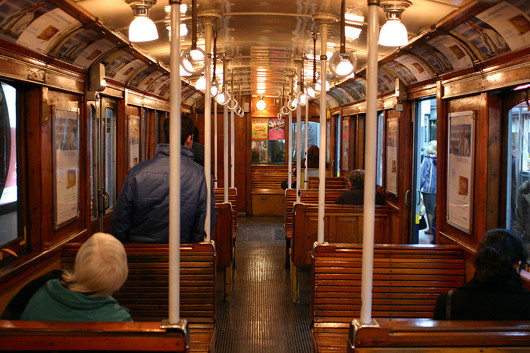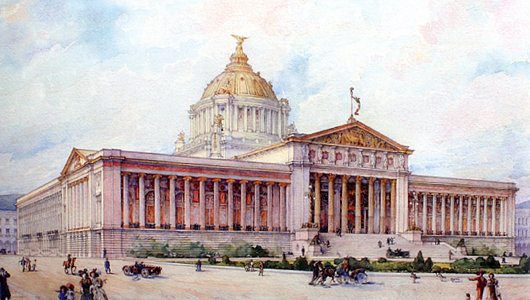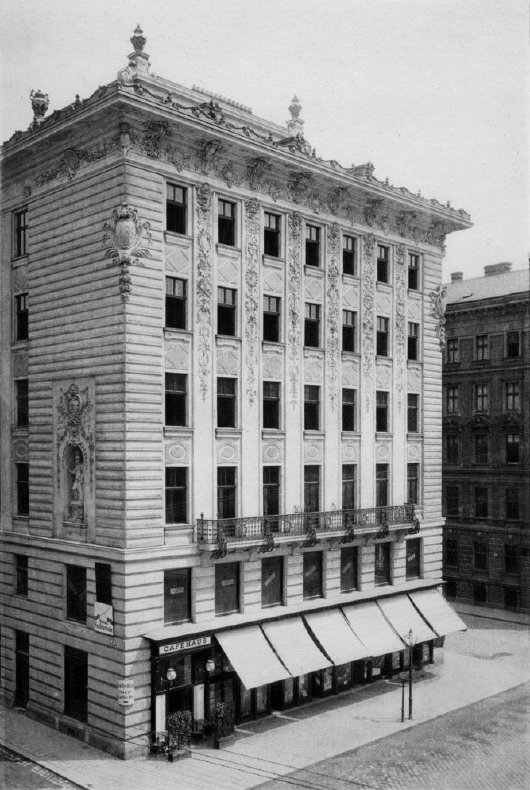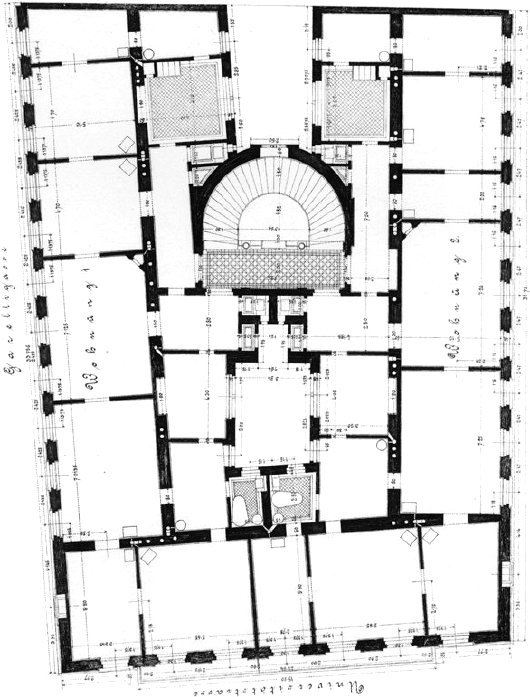World
About Andrew Cusack
 Writer, web designer, etc.; born in New York; educated in Argentina, Scotland, and South Africa; now based in London.
Writer, web designer, etc.; born in New York; educated in Argentina, Scotland, and South Africa; now based in London. read more
News
Blogs
Reviews & Periodicals
Arts & Design
World
France
Mitteleuropa
Knickerbockers
Argentina
The Levant
Africa
Cape of Good Hope
Netherlands
Scandinavia
Québec
India
Muscovy
Germany
Academica
A Bill Committee in the Commons
A Bill Committee meeting in one of the richly decorated committee rooms of the Palace of Westminster. The Minister is standing, rattling on in an explanatory defence of his government’s bill. Ostensibly these committees exist so that MPs can examine legislation in line-by-line detail and raise questions about whatever points or aspects they believe might cause problems if enacted.
“The question is that Clause 15 stands as part of the Bill.”
The Chairman, an MP of considerable experience, presides, assisted by a retinue of civil servants. He chews a pen and stokes his brow, frustrated by the boredom of the subject at hand. He is perhaps thinking of the weekend and the extreme unlikeliness that he will get down to the coast, and his sailboat, given the inclement weather.
A Scottish Member rises on a Point and the Minister yields the floor. Concerns are expressed about the precise meaning of Subclause 36 Paragraph C and insinuations made about potential costs. The Minister rises and suggests the Member’s criticism is excessively harsh. He then concedes he may have been imprecise in his explanation of the process involved in Subclause 36 Paragraph C.
The Doorkeeper, absurdly and arcanely attired in white tie, tails, and with the royal arms hanging from a gold chain round his neck, wears thick-rimmed glasses and leans back on a desk in a carefree fashion, blissfully paying little attention to the point the Hon. Gentleman has made in response to the proposed amendment.
“Just for the sake of clarity, we are not now talking about Amendment 13?”
“I have no intention of moving Amendment 13.”
“On a Point of Order then, Mr Chair, is it proper that the Member discuss Amendments 21 and 26 when he is not moving Amendment 13, which is the first Amendment to be considered?”
The Chairman corrects that it is perfectly alright for the Member to discuss whichever amendment he would like.
There are at least eleven civil servants in the room. One on the side hands a paper to another. He reads it and nods approvingly before passing it on to the civil servant next to the Chair. Another Member rises to discuss Amendment 54 Clause C.
“There’s an important role for an independent body to exercise scrutiny over this area and it would be wise for it to have a statutory basis.”
The entire proceedings are overshadowed by the continual sound of shuffling papers. One Member doodles on the day’s order-paper. A journalist leaves. The Member stops doodling and consults his iPhone. Then the Minister is grateful for that point. He is surprised but aware, since he was given this junior ministerial role, by the frequency with which this matter has arisen and has spoken before the relevant Select Committee.
Another Member’s face is illuminated by the glow of the iPad he is leaning over.
“Now before I become too Churchillian,” the Minister continues, “I think we’d better turn to the matter of the Amendments. Now the Honourable Member has, perhaps understandably, raised the point…”
A female Member smiles and shares a jest with one of her party colleagues. The Doorkeeper’s shift ends and he is replaced by one of his bearded confrères. The civil servant beside the Chairman folds a paper and stares unthinkingly into the distance.
“In respect for the Hon. Gentleman’s desire for continuing debate and discussion with the relevant authorities…”
“He hasn’t addressed my point about Subsection 2!”
The portly Doorkeeper moves with surprising adroitness in delivering a note from a Member to a civil servant across the room. The Minister’s PPS hands him a relevant paper. The Chairman smiles in response to one of the Minister’s light-hearted remarks.
“I’m sure the Minister will agree that this is not the beginning of the end but merely the end of the beginning.”
“If only!” a Member interjects.
It is 3:32pm. The MPs will be here for hours yet.
The Other Modern in Madrid
Miguel Fisac’s Church of Espíritu Santo, Madrid
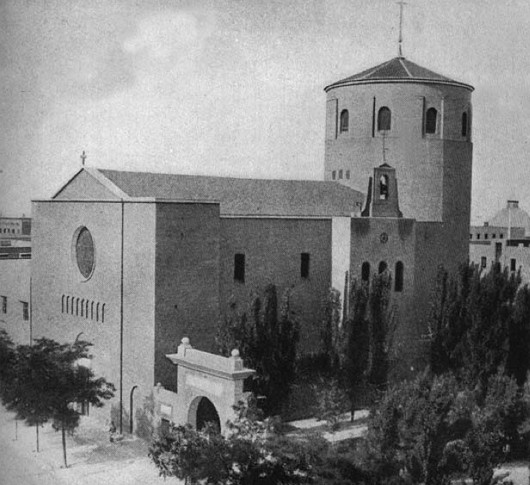
It might be difficult for some to imagine that the architect of the pagoda-like Laboratorios Jorba outside Madrid was an accomplished classicist, but, like many modern architects, Miguel Fisac began his career with more traditional works. His very first commission as an individual was to design a church for Spain’s Consejo Superior de Investigaciones Científicas (Higher Council of Scientific Research). The CISC had only been founded in 1939 and was originally housed in existing structures around Madrid. The Church of the Holy Spirit (constructed 1942–1947) was the first newly built structure for the research council, and the fact that it was an ecclesiastic building “eloquently expresses the spirit of commitment between religion and science that animated the new project” (according to the Fundacion Fisac). Around the corner from the Church of the Holy Spirit, the main headquarters of the CISC was designed by Fisac. (more…)
Linea A Loses Its Lustre
Century-Old Buenos Aires Subté Carriages Being Replaced
Disappointing news from Buenos Aires: having reached their hundredth year of service, all the original carriages on Linea A of the Subté (Line A of the Buenos Aires Underground) are to be replaced. Linea A was the first urban underground railway in South America, built by the Anglo-Argentine Tramways Company in 1913. The cars were built between 1911 and 1919 by the Belgian company La Brugeoise et Nicaise et Delcuve and were designed to be used as both tram and underground cars: low entrances at the ends permitted street-level access while middle doors were at platform level for the Subté. In 1927, the carriages were altered for underground-only use.
From 1921 onwards, the rolling stock underwent seven different refurbishments, but all with the original chassis and mechanics, and keeping the traditional 1910s interior. La Brugeoise having since been subsumed into Bombardier, original parts are no longer available for purchase, so they are custom-made at the Polvorín workshop of the Subté operating company. Of the entire Buenos Aires Underground network, these cars have the lowest rate of mechanical failure.
The La Brugeoise carriages are being gradually replaced over the next two months, and Line A will run with entirely new rolling stock from March of this year.
Yorkville Promenade
One of the thorough-going irritations of New York is that, for all its glories, one can’t help but feel that the individual, the human being, is simply not the priority there. This intriguing and worthwhile proposal from Massengale & Co, Dover Kohl & Partners, and H. Zeke Mermell, if executed, would go a long way to making the Upper East Side of Manhattan a much more people-friendly place.
It takes its inspiration from the Ramblas of Barcelona, one of the greatest streets in the world. While their written proposal (below) is couched in anti-car talk, I frankly don’t care about reducing auto use in New York City. The much more important priority is increasing people places in the city; that is, increasing the amount of public space in which it is clear that people have priority. (This will almost certainly have the same effect as the intention of reducing auto use, I’ll concede.) The city has taken some admirable steps in that direction in recent years (the increasing in pedestrian-oriented spaces, including previously unheard-of outdoors tables and chairs for the use of all and any).
The Yorkville Promenade proposal for Second Avenue is eminently suitable to its particular place and location, especially coupled with making First and Third Avenues bi-directional. It is a worthy attempt to tame and civilise streets that all too often feel quite inhumane, and should be enacted.
Yorkville Promenade on Second Avenue
FOR SO MANY REASONS, we must reduce auto use in New York City. Studies for Mayor Bloomberg showed that living on a high-traffic avenue in Manhattan is un-healthy, particularly for our children. To add insult to injury, 80% of Manhattan residents do not own cars, and only 20% of our out-of-town commuters drive to work. Our ugly, unhealthy avenues are more for the benefit of others than Manhattan’s workers and residents.
Most Manhattanites live in small apartments and spend a lot of time in public life. When the weather is nice, we spend lots of money to dine next to places designers call “auto sewers”: noisy, smelly streets made to move cars quickly, with wide, one-way lanes and no parking at rush hour so that the speeding cars and trucks are inches from the sidewalk. It doesn’t make much sense.
Then there are the problems of Climate Change and Peak Oil. We have built our way of life on an inexpensive but non-renewable resource that is simultaneously starting to run out, becoming more expensive than we can afford and changing the earth for the worse.
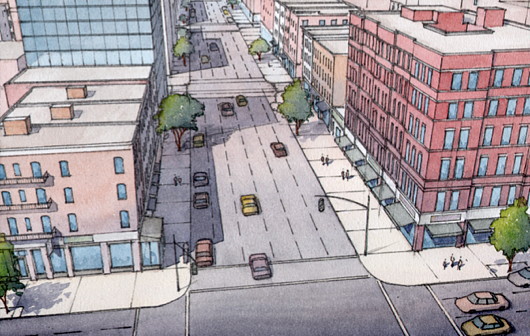
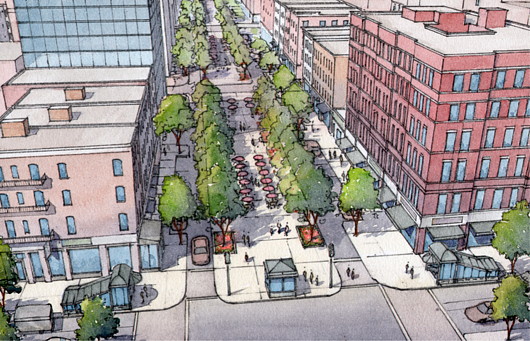
The New Yorkville Ramble
The Yorkville Ramble is an idea for a new way to rebuild Second Avenue, after the completion of the new subway under construction below the avenue. Inspired by the famous Ramblas of Barcelona, the design gives the center of the wide avenue that was once two-way to a new car-free linear park for walking, biking, sitting, dining and people watching. Cafés and restaurants along Second Avenue would be licensed to have tables on the center island. Narrow traffic lanes and short term parking lanes to each side would let cars and deliveries come and go while eliminating speeding traffic from Second Avenue.
Construction would be timed to work with the construction phasing for the subway, which will initially run from Sixty-Third Street to Ninety-Sixth Street. The Ramble would be a special place that enlivens the Manhattan grid, like Broadway on the Upper West Side and Park Avenue on the Upper East Side, with a vibrant street life unlike staid Park Avenue.
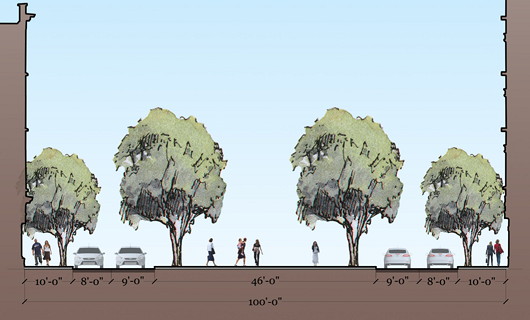
WEST OF THIRD AVENUE ON THE UPPER EAST SIDE, the introduction of Madison and Lexington Avenues into the normal city grid produced shorter blocks that made the grid more interesting for pedestrians and thereby increased the value of the real estate.
Yorkville’s longer blocks are less pedestrian-friendly, and Second and Third Avenues both used to have that New York oxymoron–the elevated subway–depressing real estate values and building quality for decades. In recent decades the area has boomed, and the Yorkville Ramble will give it a linear neighborhood center unique in New York City, drawing from both the neighborhood and the access provided by the new subway line.
Proposed Congestion Zone
Mayor Bloomberg and the New York City DOT have proposed a congestion zone for the city. London’s congestion zone shows that roads like the Second Avenue design proposed by the DOT will then be oversized and inappropriate for the amount of traffic they will have. First and Third Avenues could go back to being two-way, as they once were, and traffic would move in a more civilized fashion. We don’t need to make express auto routes in and out of the city when we have the best mass transit in the country.
The bicycle lane in the DOT’s new design for Second Avenue is a good idea, but the design for the road shown above is still a traffic engineer’s dream, with wide, one- way lanes and no parking shielding the pedestrian from the speeding cars, buses and trucks. Studies show that walkers don’t like the visual clutter of all the signs and multi-color lanes that the engineers want. Walkers also of course want wider sidewalks.
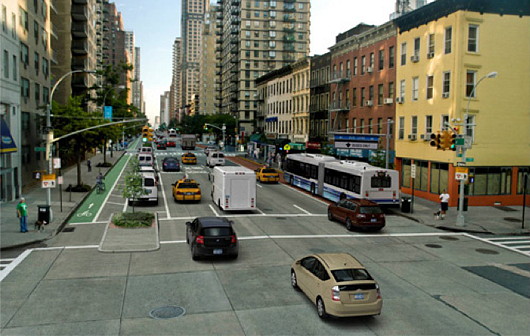
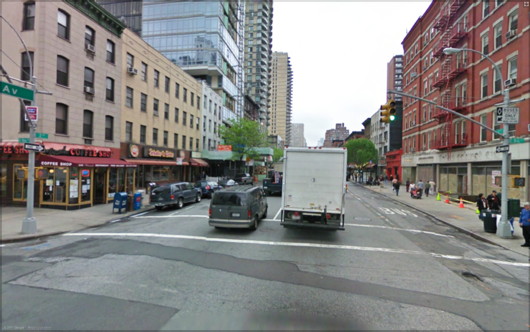
Conclusion
Second Avenue is currently torn up for the subway con- struction and its rebuilding will start in the next few years. Combined with changing attitudes and perceptions about the car in the city, that makes now the perfect time for a humane and beautiful new type of post- auto road for New York.
France Marches for Marriage
Led by a provocative comedian, a gay atheist, and a socialist teacher, protest against same-sex marriage draws one million
As many as a million protesters descended upon Paris from every corner of France today to demonstrate their opposition to the Socialist government’s plans to introduce same-sex civil marriage. The Prefecture of Police estimates at least 380,000 participated in the three marches from different starting points that converged at the Champs de Mars in front of the Eiffel Tower. Organisers, however, set up counting stations and claim that, by 7:30pm tonight, over one million protestors had joined the march.
Volunteers charted more than eight hundred vehicles to bring protestors to Paris, while six TGV high-speed trains were reserved for demonstrators. “Had the conditions for chartering trains not been as stringent,” an organiser told Le Figaro “the number could easily have been double.”
“In the freezing cold,” Le Figaro reports, “young, old, and families with children were trying to keep warm waving thousands of pink flags to the jerky rhythm of techno music.”
The entire workforce of the Directorate of Public Order & Traffic was called out to handle the massive demonstration, which forced a Paris Saint-Germain football match to be brought forward. Police believed it would be impossible to secure the area around the Parc des Princes stadium when hundreds of thousands of protesters were expected in the centre of the French capital.
The protest today was organised by the eccentric comedian Frigide Barjot, founder of the Collectif pour l’humanité durable, joined by gay atheist Xavier Bongibault of the association Plus gay sans mariage (“More Gay Without Marriage”), and Laurence Tcheng of La gauche pour le mariage républicaine (“The Left for Republican Marriage”).
The unlike troika claim to have launched “a guerrilla war” against the current Socialist Party government’s proposed same-sex civil marriage legislation. Avoiding the mainstream media, ‘Team Barjot’ went direct to supporters through social media such as Facebook and Twitter, and, countering the government’s branding of same-sex civil marriage as “Mariage pour tous”, named their protest “Le Manif Pour Tous” (‘The Protest for All’), asserting that all children have a right to a mother and father.
If opinion polls are to be believed, the campaign against the proposed law seems to be changing perceptions. From 2000 to 2011, polls showed a steady rise in support for same-sex marriage. In 2012, this percentage began to decline; support for allowing same-sex couples to adopt also fell. Meanwhile, polls claim that 69% prefer same-sex marriage be put to a referendum. (more…)
Don Bosco in London
Just went to venerate the relics of Don Bosco, which are doing a UK-wide tour organised by the Salesian order. There was quite a crowd waiting for the Saint’s earthly remains to be unveiled at 2 o’clock — suprising for early afternoon on a workday. Before the relics were even made viewable there were pilgrims huddled around the veiled reliquary, whom the organisers eventually had to shoo away in order to organise some proper veneration.
The faithful are able to venerate the relics at Westminster Cathedral from 2:00pm to 8:30pm today and tomorrow only, after which they will spend the next two days at St. George’s Cathedral in Southwark before returning to Italy.
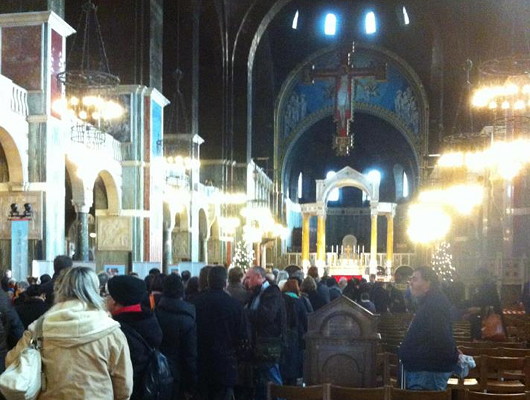
The ingenuity of eighteenth century furniture
The Metropolitan Museum is hosting an exhibition, Extravagant Inventions: The Princely Furniture of the Roentgens, that continues for just a few days more. The show looks at the work of Abraham Röntgen and his son David, whose workshop created the most extraordinary pieces of furniture. A few of them are presented here in videos: above, a secretary cabinet, and below, a writing desk, dressing table, and automaton of Marie Antoinette. (more…)
Palacio Legislativo Federal
MOST OF THE major American countries have large parliamentary buildings built at the height of their prosperity in the decade before and after 1900, but Mexico is a particular exception. (Brazil, for complicated reasons, is another). In the 1890s, the government of President Porfirio Díaz decided that it needed a grand legislative palace whose magnificence would be worthy of the head of state’s own grand appearance. A competition was held and an entry chosen as the winner, but the victor was disregarded in favour of a new design by a French architect.
Émile Bénard had assisted the great Charles Garnier in draught work for the celebrated Paris Opera House which now bears that architect’s name. In the 1890s, Bénard became famous for winning Phoebe Hearst’s architectural competition for the campus of the University of California at Berkeley with his entry “Roma”. The Spectator wrote from the London of the day, “On the face of it this is a grand scheme, reminding one of those famous competitions in Italy in which Brunelleschi and Michelangelo took part. The conception does honor to the nascent citizenship of the Pacific states.” Unfortunately, very little of Bénard’s scheme for the academic complex was completed.
Fit for a Duke in Covent Garden
Russell House, No. 43, King Street
This apartment occupies the piano nobile of a 1716 house designed by Thomas Archer for the Earl of Orford, then First Lord of the Admiralty. He obtained the lease for the site from his uncle, the Duke of Bedford, on condition he tear down the house located there and build a new one. Batty Langley, the eighteenth-century garden designer and prolific commentator hated it, and devoted over 200 words of his Grub Street Journal (26 September 1734) to slagging it off. The Grade II*-listed building looks onto Covent Garden Piazza and has seen a number of uses over the years. (more…)
London’s Fallen Water
A cursory investigation into the metropolis’s drinking water yields results that veer towards the somewhat disturbing
by ALEXANDER SHAW in London
UNDERSTANDING  enables self-preservation, but occasionally leads us out of Eden too. Thus, I’m not encouraging you to understand how London’s water is recycled, I’m merely tempting you to.
enables self-preservation, but occasionally leads us out of Eden too. Thus, I’m not encouraging you to understand how London’s water is recycled, I’m merely tempting you to.
Education is like lighting a fire, not filling a bucket. One realisation leads to another:
Q: What happens when the ice cubes melt in a brimming Tumbler of Scotch?
A: Nothing – so the disappearance of the polar icecap won’t raise sea levels. So I can drive an eight-litre Bentley after all.
Q: What happens when two cars each travelling at 30mph collide head on head?
A: The Bentley’s CD player skips a track and someone spends the afternoon picking a Nissan Micra out of the radiator.
Point by point, basic wisdom allows us to unpick the paranoid egalitarian ideas subversively presented by the Marxist GCSE Physics curriculum.
However, I am horrified that, even with my impeccable logic, it has taken me three years to realise that London’s recycled potable water supply harbours a rather dirty secret. It was the lime scale in the kettle which gave it away. We all know that, as with many cities, London recycles its water. But why, after the process of evaporation and recondensation, does limescale remain in the supply? The answer, to my unutterable horror, is that it is not recycled by evaporation.
I’ve given up trying to get straight answers from Thames Water about exactly what goes on. Like the pro-choice lobby and socialist economists, they gloss over all manner of sins with a vast lexicon of euphemisms.
For ‘carbonaceous waste,’ read: diarrhoearic faeces comprised of doner kebabs and salted French fries, crammed past cankerous lips by nail-bitten greasy fingers of obese female students in bus stops at 3am. For ‘nitrogenous waste,’ read: cheap lager, churned through proletarian digestive systems whose uncircumcised owners moan with relief as the steel urinal tangs of ammonia – gobs of chewing gum and Mayfair fag butts collecting at the foot of the drain. After a brief sifting and filtering, these ‘wastes’ then gush out of London showerheads. The final confluence of the city’s vomit is on my own pale, patrician flesh.
It might not disturb me so much if the water were sent back to the same house, or even the same postcode. At least in Chelsea, we would be drinking the urbane fruits of some anorexic supermodel’s colonic. But no, the city’s water is pooled in something called the ‘Thames Water Ring Main,’ which sounds ghastly, and is so huge that it reaches down to somewhere called ‘zone four.’
I have read an account of the process used to purify our sewage on Thames Water’s website. First they filter it ‘through a rake’ (right, OK), and then ‘most of the solids are removed by settlement.’ After that, they skim off the cleaner bit of what, by then, is basically an un-shaken-up shit smoothie and pump it through a gravel pit of bacteria. Then they send it back to my house.
The internet consensus seems to be that, on average, our tap water has gone round this system approximately seven times and, for those who still have diehard faith in the system, people start to feel nauseous when they drink 11th generation water. So yes, it does get muckier each time.
“Well, if we don’t get ill it must be alright,” a friend of mine concluded, taking a defiant swig of the tap water she’d just ordered in a café. It seems this may also be the underlying philosophy of Thames Water. I find it an unsettlingly laissez faire approach.
The U.S Geological Survey discovered that the dozens of trace chemicals – often derived from medication – which slip through modern filtration processes amount to ‘only a thimble full in an Olympic pool.’
Only!?! If that thimble were of blood, a shark would smell it. If it were Polonium 210, it would be enough to wipe out the entire city. And, heavens above, any folk who take homeopathy seriously will consider that sort of dilution the medical equivalent to downing a pint of dysentery or bathing in the cesspit of a Kinshasa prison.
Furthermore, the ‘fresh’ water that is brought in to our supply from the Thames contains the only-slightly-treated sewage of the settlements upstream. I’m going to guess that 95% of the female populations of Reading, Cowley, Slough and Swindon perform some type of medical injunction upon their reproductive system every Saturday (or Sunday morning, God forbid). And, of course, what goes in must come out.
A Drinking Water Inspectorate report submitted to Defra in 2007 proclaims that our UK filtration techniques ‘can result in removal rates of more than 90% for a wide variety of pharmaceuticals.’ Oh, good! Only less than 10% gets back in! Further down the report, we read: ‘Very limited data were available for the concentrations of pharmaceuticals or illegal drugs in UK drinking waters, but data from the rest of Europe and the USA have shown that concentrations in finished drinking water at treatment works are generally =100 ng.l-1’ (which sounds like another euphemism to me). The report continues to say that the filtration processes are ‘not specifically designed to remove pharmaceuticals and several compounds have been reported in finished drinking water.’
The report is available in summary here. I was retching and gagging by the third paragraph.
It comes as little surprise to me that our perverse society seems more preoccupied with the treatment of the ‘sludge’ which is siphoned out, than the ‘water’ which is pumped back in to our taps. The Thames Water reports abound with the ‘European Sludge Directive,’ the worthy ‘good chemical status,’ and not forgetting, of course, the all-important ‘Safe Sludge Matrix.’ I have already expounded upon the true meaning of ‘carbonaceous’ and ‘nitrogenous,’ so I will spare you my reflections on ‘sludge.’
In order for my water to be clean, it must be broken down to a molecular level, de-ionised, re-ionised, blessed by a bishop, and prayed over by a virgin.
However, I have identified two brands of bottled water which almost meet the standards which we must now demanded from natural sources: Tasmanian Rain ($11 a bottle), is captured from the ‘purest skies on earth,’ and doesn’t touch the ground before it gets to the bottle. Only problem is: what if a bunch of Aussies on stag-night fly a smoky old Cessna over the rain catchment facility? Perhaps better is 10 Thousand BC ($14 a bottle) – or the hippy’s dilemma, as I call it – because it’s extracted from a glacier and derives its purity from having been frozen since before the fall of man.
Or, of course, you could just give up drinking water, as I did years ago.
Arab Newspapers
Having recently made my first venture into the Middle East, I thought I’d provide a brief overview of the pan-Arab newspapers that are read by exiles, businessmen, and intellectuals in Arabia and the diaspora.
The Impetuosity of Youth
From the Flickr feed of South Africa’s Etienne du Plessis:
These pictures were taken 2 October 1964: I was the pilot [writes Quentin Mouton]. The pictures are original and not ‘touched up’. The ‘Pongos’ (Army types) were on a route march from Langebaan by the sea to Saldanha. The previous night in the pub one of them had said: “Julle dink julle kan laag vlieg maar julle sal my nooit laat lê nie!” (You think you can fly low, but you will never make me hit the deck). Hullo!!!
I went to look for them on the beach in the morning and was alone for the one picture. I was pulling up to avoid them. In the afternoon I had a formation with me and you can see the other a/c behind me. (piloted by van Zyl, Kempen, and Perold).
A friend by the name of Leon Schnetler (one of the pongos) took the pics. The guy that said “Jy sal my nie laat lê nie!” said afterwards that he was saying to himself as I approached: “Ek sal nie lê nie, ek sal nie lê nie” (I wont go down, I wont go down) and when I had passed he found himself flat on the ground.
Memories from the past.

Marlow’s St Paul’s Capriccio
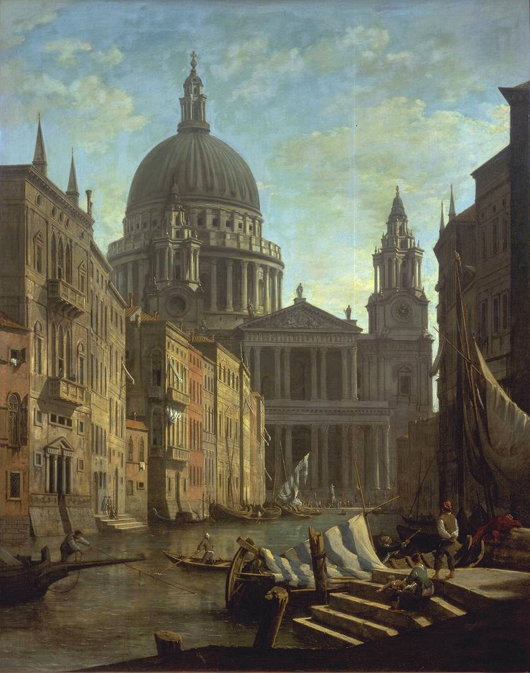
c. 1795; oil on canvas, 60 x 41 in.; London, Tate Gallery
The view of St Paul’s Cathedral as if it had been completed according to the original plans of Wren and with Hawksmoor’s baptistry (which I posted yesterday) reminded me of this capriccio by William Marlow. And then this in turn recalled my 2005 post If London Were Like Venice.
The UN at Quebec
IN 1943, THE BRITISH, Canadian, and American governments descended upon the city of Quebec, capital of la vieille province, for an intergovernmental conference to plan the invasion of France — surely one of the greatest military tasks ever undertaken in the modern era. The site proved auspicious due to a peculiar combination of factors: Quebec City enjoys a certain European cachet but with both the geographic safety of North America and the more spacious accommodation usual to that continent. The three governments held a second conference there in 1944, and in 1945 the International Labour Organisation met in the city, followed a few months later by the Food & Agriculture Organisation of the nascent United Nations.
With this track record of indisputable experience, the ville de Québec, lead by its mayor Lucien Borne, put in a bid to be the permanent seat of the United Nations Organisation. (more…)
Ireland needs an undeniably world-class university
NOT A SINGLE Irish university made it into the top 100 of the Times Higher Education World University Rankings this year, but reviving an old proposal might give Ireland more global clout in the academic sphere. While all rankings systems are on some level arbitrary, the THE takes into account the views of over 17,000 academics across the planet and gives us an insight into how institutions — and by extension their host countries — are perceived not only in academia but also in the perhaps more lucrative field of research and development.
Being pushed out of the top 100 doesn’t necessarily indicate that higher education in Ireland is in any crisis; it could merely reflect the comparative rise of other institutions in countries which are beginning to appreciate the value of academic research and institutional prestige. But a country shouldn’t rest on its laurels, and it’s worth asking: Is Ireland missing an opportunity to have a university of unquestionable world-class status?
Reflecting on the 2012 THE rankings, political commentator Richard Waghorne suggested via Twitter that it is high time that University College Dublin, Trinity, and Dublin City University were amalgamated into the University of Dublin. This is an idea with a long heritage which, even if it is to be rejected, needs to be considered seriously. (more…)
Little Ben
 WALKING THROUGH Victoria recently, I was horrified to see the recent renovations and street improvements have led to the disappearance of ‘Little Ben’, the small Victorian clocktower that sat in a traffic island halfway between Westminster Cathedral and Victoria Station. Little Ben is a convenient meeting place in a district that is rather uninspiring and surprisingly lacking in conveniences.
WALKING THROUGH Victoria recently, I was horrified to see the recent renovations and street improvements have led to the disappearance of ‘Little Ben’, the small Victorian clocktower that sat in a traffic island halfway between Westminster Cathedral and Victoria Station. Little Ben is a convenient meeting place in a district that is rather uninspiring and surprisingly lacking in conveniences.
Why, for example, is there no decent pub in Victoria? If you need a meal, Grumbles of Pimlico is walking distance, and they treat you well at Il Posto. But a decent pub atmosphere is not to be had, unless you fancy The Pub Formerly Known as the Cardinal (now styling itself as ‘The Windsor Castle’).
Happily, a simple Google search reveals that Little Ben’s absence is merely temporary: indeed, Little Ben is taking a rest-cure. The goodly folk at Wessex Archaeology have informed us as such.
The clock owes its creation to Gillet & Johnston of Croydon, who built Little Ben in 1892 and erected it in the middle of Victoria Street. It fell victim to a road-widening scheme and was removed in 1964 but, after sitting in storage unappreciated for some years, it was finally renovated and restored to its original location in 1981.
Transport for London is currently working on a significant upgrade to Victoria Underground Station, including a rearranged traffic alignment on surface level, in addition to new entrances and exits and a great big whopping ticket hall sous la terre. When all is finished and done and in tip-top shape, Little Ben will be returned to his traditional location, and some semblance of order will return to this sector of the most unglamorous Victoria Street.
Overwhelming the Farber Building
A bland glass-plated giant will piggy-back onto a sound example of the Modern Movement in Cape Town
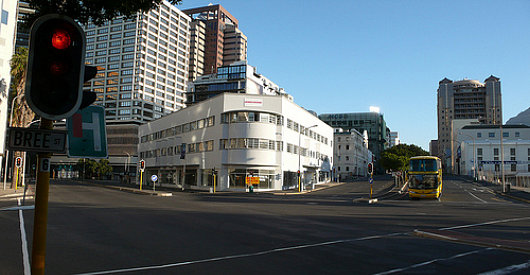
The Farber Building, one of the few extant examples of the Modern movement in architecture in Cape Town, is to be overwhelmed by an eighteen-storey plate-glass skyscraper. The developers had sought to have the 1935 building designed by Roberts & Small demolished, but the city fathers wisely refused permission. The price of its salvation, however, is that the boring skyscraper will piggy-back onto this actually rather inoffensive Modern structure. (more…)
The Historical Sale at Adam’s
800 Years: Irish Political, Literary, and Military History – 18 April 2012
THE ANCIENT PRACTICE of lèche-vitrine is one hallowed by time and tradition. I remember one December day I had a lunch appointment with a friend who worked at the late, lamented Anglo-Irish Bank on Stephen’s Green in Dublin and, being early, I nipped a few doors down to the auction house Adam’s to engage in a bit of what I like to call thing-avarice (which the Germans probably have a word for). We do enjoy taking the occasional peek round the Dublin auction houses to see what’s what, and to examine the cabinet of curiosities that come out from ancient houses and rotting flats and appear in these bright places where commerce and refinement play their strange little waltz. When it comes down to it, though, it’s really just about having nice things — the sort of stuff you want lying around the house inexplicably.
Anyhow, the historical auction at Adam’s is coming up on 18 April and sure enough their senior rival Whyte’s is having a similar sale just a few days later on 21 April. We’ll only look at Adam’s here — if we considered Whyte’s as well, we’d be here all day. (more…)
The Hon. Lady Goulding
Grande dame of charity and sometime Fianna Fáil senator who provided a ‘harbour of hope’ for the disabled & represented Ireland in squash
IF, LIKE ME, YOUR Venn diagram shows a massive overlap for the circles representing politics, history, aesthetics, and design, then the Irish Election Literature website is a dangerous place where you can waste many minutes of your day. Not long ago, I stumbled across their collection of electoral bits related to Valerie, the Hon. Lady Goulding — at least I think that’s the proper style, these realms are arcane and murky. She was most often, but incorrectly referred to as Lady Valerie Goulding, the fate of many wives of baronets I’m afraid.
She was born Valerie Hamilton Monckton in 1918 at Ightham Mote (pronounced “item moat”, obv.), the house noted for its Grade I listed dog kennel. Her father, Sir Walter Monckton (later 1st Viscount Monckton of Brenchley) was a trusted friend of Edward VIII, and the teenage Valerie was employed as a messenger shuttling letters between the King’s refuge at Fort Belvedere and Stanley Baldwin in Downing Street. Visiting Fort Belvedere in 1993, Lady Goulding recalled the last lunch she had attended there in December 1936:
She [Mrs Simpson] was leaving that afternoon for Cannes, and everyone was talking about nothing so as to avoid what was on everyone’s mind. But one really nice thing happened: there were four bottles of beer next to my place. The King had remembered that when we were rounding up the ponies on Dartmoor the previous year I had a beer in the pub, and that he had remarked that I was very young to be drinking. It was very touching.
In 1939 she attended the Fairyhouse races and met Sir Basil Goulding at a dinner party. Goulding had significant business interests in Ireland and became known for once entering a bank board meeting on rollerskates. On her second visit to Ireland, they became engaged, and married quickly as the threat of war loomed on the horizon. Sir Basil served in the RAF, rising to the rank of Wing Commander, while Lady Goulding opted for the First Aid Nursing Yeomanry before switching to the Auxiliary Territorial Service. After the war, the Gouldings moved to Dargle Cottage in Enniskerry, Co. Wicklow. (more…)
Search
Instagram: @andcusack
Click here for my Instagram photos.Most Recent Posts
- Sag Harbor Cinema March 26, 2025
- Teutonic Takeover March 10, 2025
- Katalin Bánffy-Jelen, R.I.P. March 3, 2025
- Substack Cusackiensis March 3, 2025
- In the Courts of the Lord February 13, 2025
Most Recent Comments
Book Wishlist
Monthly Archives
Categories

